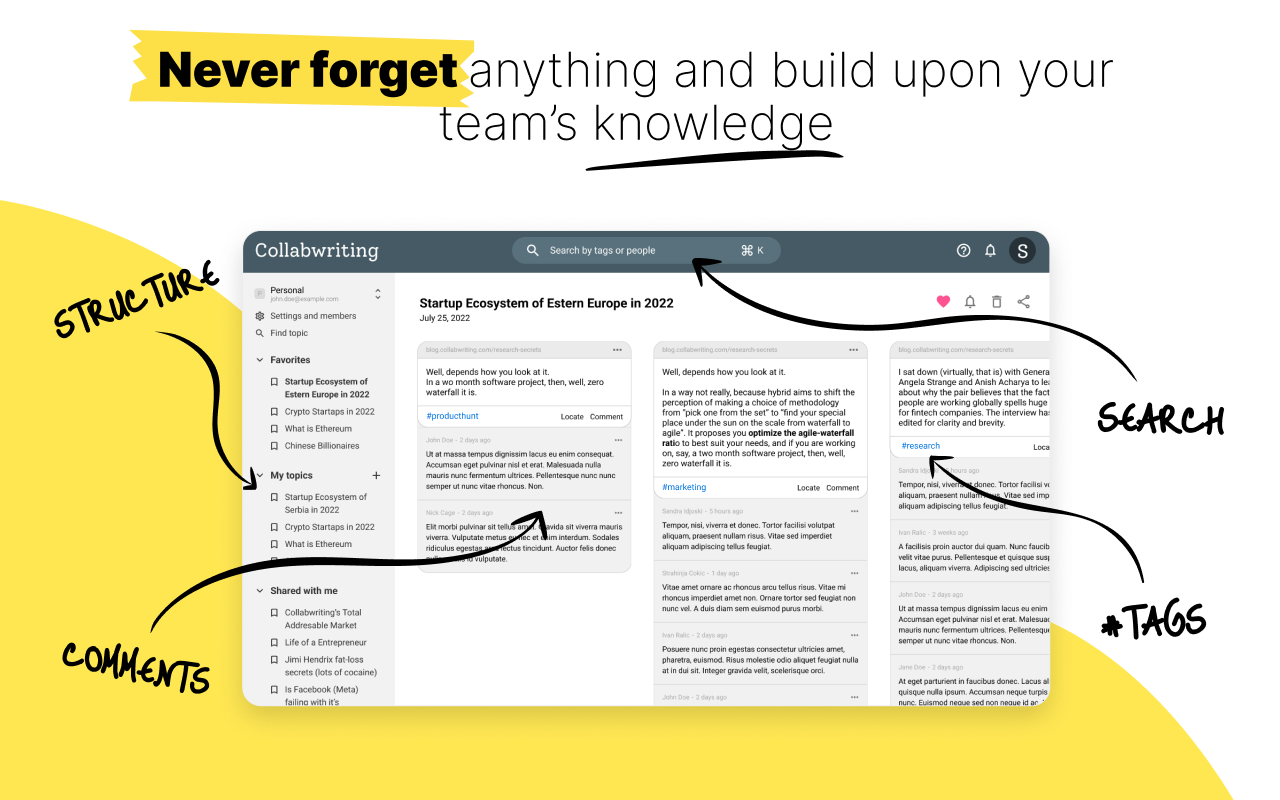To climb the career ladder, you've got to make yourself more noticeable. And by that, we're not talking about just being seen but making sure people recognize the results you bring in.
One smart way to pull this off is through teaming up on research. Collaborating with others in your field not only puts you in the spotlight but also helps you grow your connections and polish your skills.
In this article, we'll break down easy ways to use collaborative research to boost your professional visibility.
Understanding the importance of professional visibility
Before we jump into how teaming up on research can help improve your professional visibility, let's make sure we're on the same page about what professional visibility really means.
Defining professional visibility
Professional visibility is all about how you're seen and respected in your industry. It's not just about having a good name; it's about being a go-to person known for your expertise. When your professional visibility is strong, people value your opinion, seek your advice, and see your work as influential.
Getting to this level isn't an overnight thing - it takes consistent effort and a smart strategy.
One way to enhance your professional visibility is through publishing research papers and articles. When you publish research papers and articles, you're not just adding to what's already known – you're showing everyone you're the expert. Your work becomes the go-to reference for others, and soon, your name is linked with top-notch research.
Notably, there's a badge system - if you consistently share knowledge and actively engage in discussions, you earn a badge, showcasing your expertise in a specific field.
Another aspect of professional visibility is networking. Being visible in your field is not just about what you know but also who you know. Building connections with others in your industry is like opening doors to exciting opportunities.
Go to conferences and workshops, meet people who share your interests, and start collaborations. These connections could land you cool projects, speaking gigs, and maybe even job offers.
Moreover, professional visibility can also positively impact your personal brand. When you are known for your expertise and contributions, people are more likely to trust and seek out your services.
Additionally, being professionally visible helps you stay in the loop with the latest trends in your field. By actively connecting with other professionals, you open yourself up to fresh ideas and different perspectives.
This ongoing learning and development play an essential role in advancing your professional journey and keeping you at the forefront of your industry.
The power of collaborative research
Now that we get why being professionally visible is important, let's see how teaming up on research can make it even better.
Collaborative research involves working with other experts or professionals to conduct studies, publish papers, or create innovative projects. This collaborative approach offers a bunch of advantages that can significantly boost your professional visibility.
Benefits of collaborative research
Collaborative research has a bunch of great benefits but it all starts with listening.
When you're teaming up with others, start by being a good listener. Listen with an open mind and heart especially when the topic is new or different opinions are on the table.
If you nail this, people will naturally feel at ease sharing their thoughts, laying the groundwork for collaborations.
A higher level of expertise
Teaming up in research means bringing together everyone's expertise, skills, and knowledge. This collective brainpower often results in a deeper understanding of a subject or problem.
Resource sharing
Teams can easily gather knowledge in a shared database and share resources with just a click, using tools like Collabwriting. This not only makes things run smoothly but also allows researchers to take on bigger projects that might be too much for one person.

Collabwriting - Shareable Notes on Web Pages and PDFs
Collabwriting allows you to gather all your online sources in one place. Just highlight, save, and collaborate with anyone on any content you find online.
Better productivity
Teams get more done because members can work on different parts of a project at the same time. This way, tasks are done faster, making the overall research process easier.
Diverse perspectives
By spending time with people who come from different backgrounds and have different ways of thinking about problems, you’ll generate more ideas and have more opportunities to find new solutions or better ways of doing things. You may find a way of approaching an old issue that finally gets results or a new approach that no one had thought of before.
Plus, collaborating with others brings different viewpoints and methods, sparking creativity and innovation for better research outcomes.

Conclusion
If you want to be recognized as an expert in your field, someone from whom others draw knowledge, it's time to start sharing that expertise. This can be achieved through networking, research papers, but also through collaborative research.
Remember, the true essence of expertise lies not just in what you know, but in how generously you collaborate around that knowledge.
You know how they say: Knowledge only doubles when shared.













